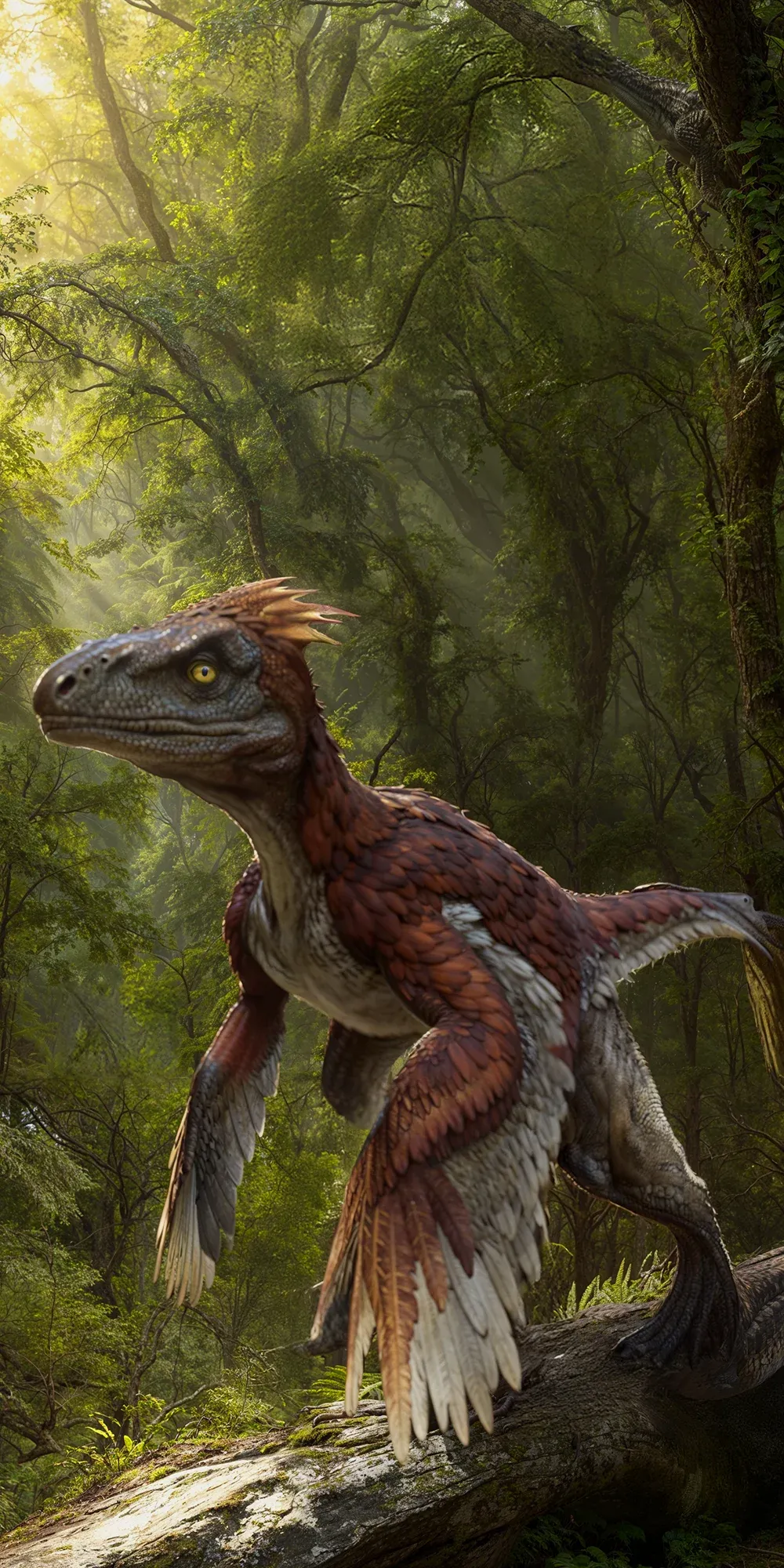The Pyroraptor
The Pyroraptor, also known as the "fire thief," was a small dinosaur that lived during the Late Cretaceous period. It was a bipedal dinosaur with long legs, sharp claws, and a sleek, lightweight body. Pyroraptor had a long tail that helped with balance while running, and its name comes from the Greek words for "fire" and "thief," possibly due to its speed and predatory nature.

| Pyroraptor | |
|---|---|
| Size | Approximately 6 feet (1.8 meters) |
| Weight | Around 40 pounds (18 kilograms) |
| Speed | 24mph (39km/h) |
| Key Strength | Speed and agility |
| Biggest Weakness | Size and strength |
| Scientific Name | Pyroraptor olympius |
| Family | Dromaeosauridae |
| Habitat | Woodlands |
| Geography | Present-day France |
| Diet | Carnivorous |
| Lifespan | 15 years - 20 years |

The Pyroraptor
The Pyroraptor, also known as the "fire thief," was a small dinosaur that lived during the Late Cretaceous period. It was a bipedal dinosaur with long legs, sharp claws, and a sleek, lightweight body. Pyroraptor had a long tail that helped with balance while running, and its name comes from the Greek words for "fire" and "thief," possibly due to its speed and predatory nature.
Fun Fact: Pyroraptor is believed to have been a fast and agile predator, capable of reaching speeds up to 40 miles per hour.
| Pyroraptor | |
|---|---|
| Size | Approximately 6 feet (1.8 meters) |
| Weight | Around 40 pounds (18 kilograms) |
| Speed | 24mph (39km/h) |
| Key Strength | Speed and agility |
| Biggest Weakness | Size and strength |
| Scientific Name | Pyroraptor olympius |
| Family | Dromaeosauridae |
| Habitat | Woodlands |
| Geography | Present-day France |
| Diet | Carnivorous |
| Lifespan | 15 years - 20 years |
Pyroraptor Matchups
We use AI to simulate matchups between the Pyroraptor and other animals. Our simulation considers size, strength, and natural predatory behaviors to determine the most likely outcome.

Can't find the Matchup you want?
Create Your Own MatchupPyroraptor: Diet, Predators, Aggression, and Defensive Behaviors
What did Pyroraptors eat?
Pyroraptors were carnivorous dinosaurs, meaning they primarily fed on other animals. They likely preyed on smaller dinosaurs, mammals, and possibly even insects or reptiles. Their sharp teeth and claws would have been used to tear flesh and hunt for food.
Did Pyroraptors have any predators?
As apex predators themselves, Pyroraptors did not have many natural predators. However, they may have faced competition and potential threats from larger carnivorous dinosaurs, such as larger raptors or tyrannosaurs. Additionally, younger Pyroraptors or injured individuals may have been targeted by other predators looking for an easy meal.
Were Pyroraptors aggressive?
Pyroraptors were believed to have been highly aggressive and territorial animals. They likely exhibited dominance displays and aggression towards rival individuals when competing for resources or mates. This behavior helped them establish and defend their territory within their ecosystem.
Did Pyroraptors fight?
Pyroraptors were likely solitary hunters, but they may have engaged in fights with each other, especially during mating season or when competing for food or territory. These fights could have been violent, with individuals using their claws and teeth to inflict damage on their opponents.
How did Pyroraptors defend themselves?
In addition to their aggressive nature and ability to fight, Pyroraptors would have used their speed and agility to defend themselves against predators or rivals. Their long legs and sharp claws allowed them to quickly retreat from danger or launch surprise attacks on threats.
What was the biggest weakness of Pyroraptors in a fight?
Despite their speed, agility, and sharp claws, Pyroraptors were relatively small compared to some of the larger dinosaurs of their time. Their size made them vulnerable to larger predators that could overpower them in a fight. Additionally, their lightweight frame may have been susceptible to injuries from larger, more powerful opponents.
Fun Fact: Recent studies suggest that Pyroraptor may have been covered in feathers, providing insulation and possibly aiding in display or camouflage.
Fun Fact: Fossil evidence of Pyroraptor has been found in France, specifically in the region of Provence, where it likely roamed the shores of ancient waterways hunting for prey.











